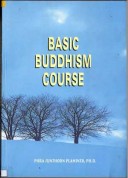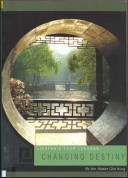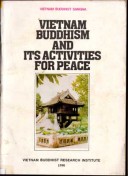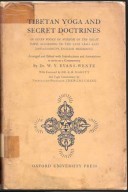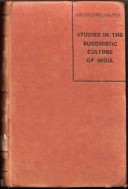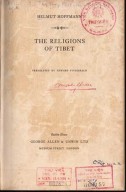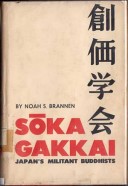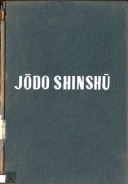Tìm Sách
Sách tiếng Anh-English >> The Path of Purification
Thông tin tra cứu
- Tên sách : The Path of Purification
- Tác giả : Bhadantacariya Buddhaghosa, Bhikkhu Nanamoli
- Dịch giả :
- Ngôn ngữ : Anh
- Số trang : 885
- Nhà xuất bản : The Corporate Body of the Buddha Education Foundation
- Năm xuất bản :
- Phân loại : Sách tiếng Anh-English
- MCB : MCB: 1210000007568 Page : 885 pages INTRODUCTION The Visuddhimagga—here render
- OPAC :
- Tóm tắt :
INTRODUCTION
The Visuddhimagga—here rendered ‘Path of Purification’—is perhaps unique in the literature of the world. It systematically summarizes and interprets the teaching of the Buddha contained in the Pali Tipitaka, which is now recognized in Europe as the oldest and most authentic record of the Buddha’s words. As the principal non-canonical authority of the theravada, it forms the hub of a complete and coherent method of exegesis of the Tipitaka, using the ‘Abhidhamma Method’ as it is called. And it sets out detailed practical instructions for developing purification.
Background and main facts
The works of Bhadantacariya Buddhaghosa fill more than thirty volumes in the Pali Text Society’s Latin-Script edition; but what is known of the writer himself is meagre enough for a page or two to contain the bare facts.
Before dealing with those facts, however, and in order that they may appear oriented, it is worth while first to digress a little by noting how Pali literature falls naturally into three main historical periods. The early or classical period, which may be called the First period, begins with the tipitaka itself in the 6th century b.c. and ends with the Milinda-pafihd about five (?) centuries later. These works, composed in India, were brought to Ceylon where they were maintained in Pali but written about in Sinhalese. By the 1st century a.c. Sanskrit (independently of the rise of Maha- yana) or a vernacular had probably quite displaced Pali as the medium of study in all the Buddhist ‘schools’ on the Indian mainland. Literary activity in Ceylon declined and, it seems, fell into virtual abeyance between a.c. 150 and 350, as will appear below. The first Pali renascence was under way in Ceylon and S. India by about 400 and was made viable by Bhadantacariya Buddhaghosa. This can be called the Middle Period. Many of its principal figures were Indian. It developed in several centuries in the S. Indian mainland and spread to Burma, and it can be said to have lasted till about the 12th century. Meanwhile the renewed literary activity again declined in Ceylon till it was eclipsed by the disastrous invasion of the 11th century. The second renascence, or the Third Period as it may be termed, begins in the following century with Ceylon’s recovery, coinciding more or less with major political changes in Burma. In Ceylon it lasted for several centuries and in Burma for much longer, though India about that time or soon after lost all forms of Buddhism. But this period does not concern the present purpose and is only sketched in for the sake of perspective.
Page : 885 pages
INTRODUCTION
The Visuddhimagga—here rendered ‘Path of Purification’—is perhaps unique in the literature of the world. It systematically summarizes and interprets the teaching of the Buddha contained in the Pali Tipitaka, which is now recognized in Europe as the oldest and most authentic record of the Buddha’s words. As the principal non-canonical authority of the theravada, it forms the hub of a complete and coherent method of exegesis of the Tipitaka, using the ‘Abhidhamma Method’ as it is called. And it sets out detailed practical instructions for developing purification.
Background and main facts
The works of Bhadantacariya Buddhaghosa fill more than thirty volumes in the Pali Text Society’s Latin-Script edition; but what is known of the writer himself is meagre enough for a page or two to contain the bare facts.
Before dealing with those facts, however, and in order that they may appear oriented, it is worth while first to digress a little by noting how Pali literature falls naturally into three main historical periods. The early or classical period, which may be called the First period, begins with the tipitaka itself in the 6th century b.c. and ends with the Milinda-pafihd about five (?) centuries later. These works, composed in India, were brought to Ceylon where they were maintained in Pali but written about in Sinhalese. By the 1st century a.c. Sanskrit (independently of the rise of Maha- yana) or a vernacular had probably quite displaced Pali as the medium of study in all the Buddhist ‘schools’ on the Indian mainland. Literary activity in Ceylon declined and, it seems, fell into virtual abeyance between a.c. 150 and 350, as will appear below. The first Pali renascence was under way in Ceylon and S. India by about 400 and was made viable by Bhadantacariya Buddhaghosa. This can be called the Middle Period. Many of its principal figures were Indian. It developed in several centuries in the S. Indian mainland and spread to Burma, and it can be said to have lasted till about the 12th century. Meanwhile the renewed literary activity again declined in Ceylon till it was eclipsed by the disastrous invasion of the 11th century. The second renascence, or the Third Period as it may be termed, begins in the following century with Ceylon’s recovery, coinciding more or less with major political changes in Burma. In Ceylon it lasted for several centuries and in Burma for much longer, though India about that time or soon after lost all forms of Buddhism. But this period does not concern the present purpose and is only sketched in for the sake of perspective.
 Facebook
Facebook
 Google
Google
 Google+
Google+

